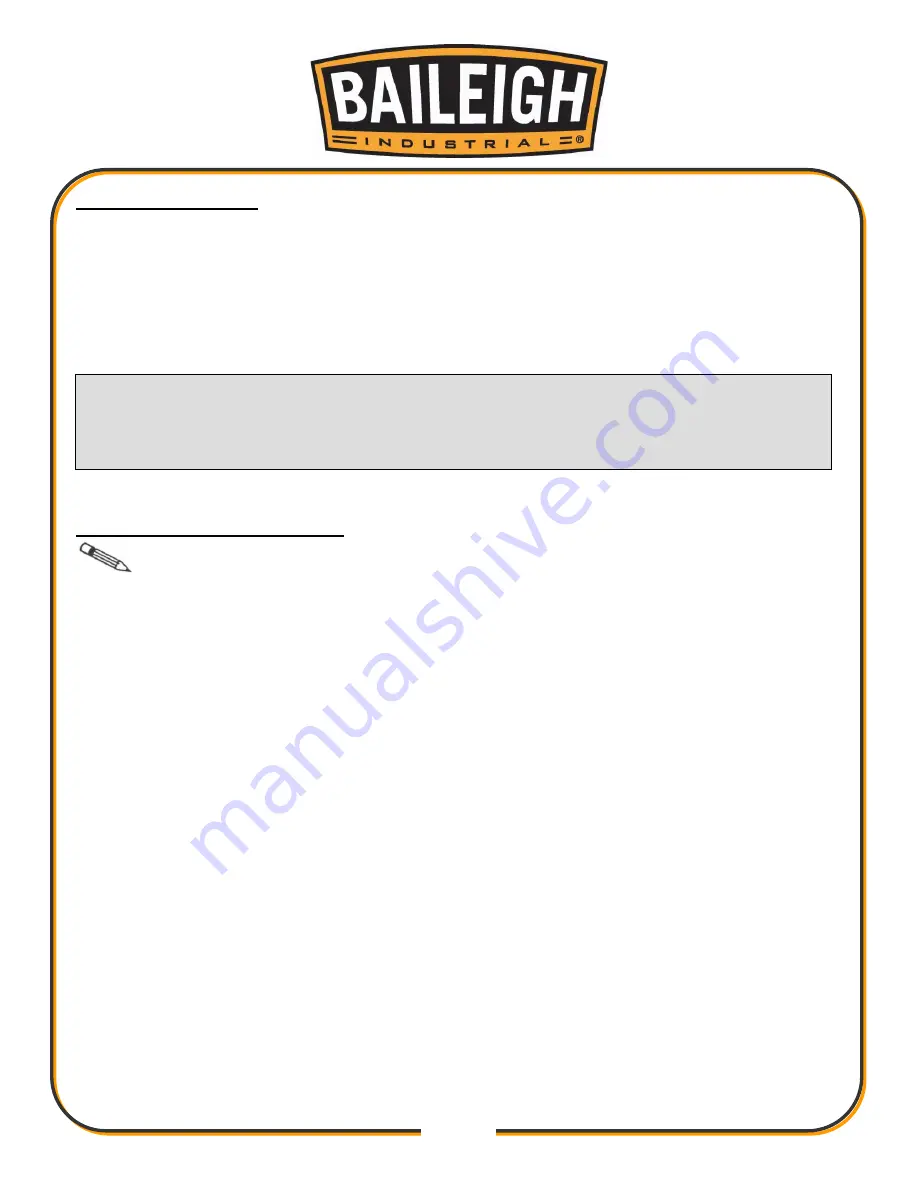
27
27
Metal Chip Indicators
Chips are the best indicator of correct material feed force. Monitor chip information and adjust
feed accordingly.
•
Thin or Powdered Chips
– increase feed rate or reduce saw speed
•
Burned Chips
– reduce feed rate and / or saw speed
•
Curly Silvery and Warm Chips
– optimum feed rate and saw speed
CHOOSING A SAW BLADE
Note: The saw blade included with this cold saw is a general-purpose blade. It is
considered a starter blade and is intended to allow for the saw to make cut as soon as it is
safely set up and ready for operation.
While this blade will cut many material profiles, the best cutting results will be achieved using a
blade which is chosen to match the material to be cut.
To achieve a quality, economical, and efficient saw cut, the following points must be taken into
consideration:
•
Type of material being cut (ferrous or non-ferrous)
•
Material hardness and physical dimensions
•
Blade descent rate
•
Rotational speed of blade
•
Blade tooth profile
Choose a tooth pitch that is suitable for the workpiece. Thin walled profiles, including tubes and
pipes require close toothing. At least 3-6 teeth should be in contact with the material while
cutting. Large solid or transverse sections require widely spaced toothing to allow for greater
volume of chips and better tooth penetration. Soft materials such as plastics, light alloys, mild
bronze, Teflon, wood, etc., require widely spaced toothing to avoid clogging.
The Baileigh cold saw is now ready to start work. For quality cutting and machine
performance always use the correct type of blade or disk and recommended cutting speeds.
To extend the life of a new blade or disk, the first two or three cuts must be made while
exerting a slight pressure on the piece part. This will double the normal cutting time.
















































